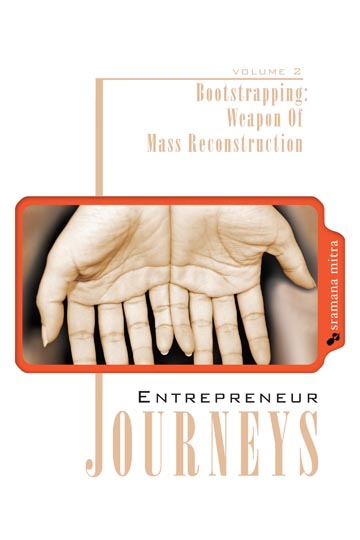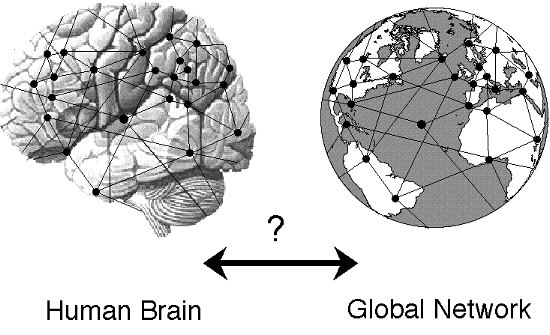One of the most important technology conferences for the year will be held in March 3-6 in San Diego, California. ETech the O’Reilly Emerging Technology Conference, now in its seventh year, will take a wide-eyed look at the brand new tech that’s tweaking how we are seen as individuals, how we choose to channel and divert our energy and attention, and what influences our perspective on the world around us. How does technology help you perceive things that you never noticed before? How does it help you be found, or draw attention to issues, objects, ideas, and projects that are important, no matter their size or location?
Below is what the 2008 version of ETech, the O’Reilly Emerging Technology Conference will look at.Â
Body Hacking. Genomics Hacking. Brain Hacking. Sex Hacking. Food Hacking. iPhone Hacking.
If you can’t open it, you don’t own it. Take over the everyday aspects of your life and take your senses to the next level.
DIY Aerial Drones. DIY Talking Things. DIY Spectrum. DIY Apocalypse Survival.
 As technology becomes more accessible you’ll get to do it all on your own. Self-empowerment starts here.
As technology becomes more accessible you’ll get to do it all on your own. Self-empowerment starts here.
Emerging Tech of India, Cuba, and Africa. International Political Dissidents.
Different environments incubate new ideas and technologies. What these societies bring out will shake up your cultural assumptions and provide a wider world view.
Visualize Data and Crowds. Ambient Data Streaming.
Dynamic systems require new methods of data capture and interaction. Open a window on the methods experts use to interpret and harness collective intelligence.
Good Policy. Energy Policy. Defense Policy. Genetic Policy. Corruption.
Policy inevitably lags behind technology advances. Learn about some areas where it’s catching up, where it’s not, and how these boundaries shape our creativity and freedom.
Alternate Reality Games. Emotions of Games. Sensor Games.
Games provide a platform for experimentation on so many levels. The ones we’ll see engage their players in new and unexpected ways.
ETech 2008 will cover all of these topics and more. We put on stage the speakers and the ideas that help our attendees prepare for and create the future, whatever it might be. Great speakers are going to pull us forward with them to see what technology can do… and sometimes shouldn’t do. From robotics and gaming to defense and geolocation, we’ll explore promising technologies that are just that–still promises–and renew our sense of wonder at the way technology is influencing and altering our everyday lives.
“There’s more good stuff here, more new directions, than we’ve had at ETech in years, which is only to be expected, as the market starts to digest the innovations of Web 2.0 and we are now featuring the next wave of hacker-led surprises.” Read more of Tim O’Reilly’s thoughts on why ETech is our most important conference.
Registered Speakers
Below are listed all confirmed speakers to date.
Dan Albritton (MegaPhone)
Chris Anderson (Wired Magazine)
W. James Au (The Making of Second Life)
Trevor Baca (Jaduka)
Tucker Balch (Georgia Tech)
Kevin Bankston (Electronic Frontier Foundation)
Andrew Bell (Barbarian Group LLC)
Emily Berger (Electronic Frontier Foundation)
Violet Blue (Violet Blue)
Ed Boyden (MIT Media Lab & Dept. of Biological Engineering)
Gary Bradski (Stanford and Willow Garage)
Tom Carden (Stamen Design)
Liam Casey (PCH International)
Elizabeth Churchill (Yahoo! Research)
Cindy Cohn (Electronic Frontier Foundation)
Steve Cousins (Willow Garage)
Bo Cowgill (Google Economics Group)
Mike Culver (Amazon)
Jason Davis (Disney Online)
Regine Debatty (We Make Money Not Art)
Danielle Deibler (Adobe Systems)
Michael Dory (NYU Interactive Telecommunications Program (ITP))
Nathan Eagle (MIT)
Alvaro Fernandez (SharpBrains.com)
Timothy Ferriss (The 4-hour Workweek)
Eric Freeman (Disney Online)
Limor Fried (Adafruit Industries)
Johannes Grenzfurthner (monochrom, and University of Applied Sciences Graz)
Saul Griffith (Makani Power/Squid Labs)
Karl Haberl (Sun Microsystems, Inc.)
Jury Hahn (MegaPhone)
Justin Hall (GameLayers)
Jeff Han (Perceptive Pixel, Inc.)
Timo Hannay (Nature Publishing Group)
Marc Hedlund (Wesabe)
J. C. Herz (Batchtags LLC)
Todd Holloway (Ingenuity Systems)
Pablos Holman (Komposite)
Tom Igoe (Interactive Telecommunications Program, NYU)
Alex Iskold (AdaptiveBlue)
Brian Jepson (O’Reilly Media, Inc.)
Natalie Jeremijenko (NYU)
Jeff Jonas (IBM)
Tim Jones (Electronic Frontier Foundation)
Terry Jones (Fluidinfo)
Damien Katz (IBM – CouchDB)
Nicole Lazzaro (XEODesign, Inc.)
Elan Lee (Fourth Wall Studios)
Jan Lehnardt (Freisatz)
Lawrence Lessig (Creative Commons)
Kati London (area/code)
Kyle Machulis (Nonpolynomial Labs)
Daniel Marcus (Washington University School of Medicine)
Mikel Maron (Mapufacture)
John McCarthy (Stanford University)
Ryan McManus (Barbarian Group LLC)
Roger Meike (Sun Microsystems, Inc.)
Chris Melissinos (Sun Microsystems, Inc.)
Dan Morrill (Google)
Pauline Ng (J. Craig Venter Institute)
Quinn Norton
Peter Norvig (Google, Inc.)
Nicolas Nova (Media and Design Lab)
Danny O’Brien (Electronic Frontier Foundation)
Tim O’Reilly (O’Reilly Media, Inc.)
David Pescovitz (BoingBoing.net, Institute for the Future, MAKE:)
Bre Pettis (I Make Things)
Arshan Poursohi (Sun Microsystems, Inc.)
Marc Powell (Food Hacking)
Jay Ridgeway (Nextumi)
Hugh Rienhoff (MyDaughtersDNA.org)
Jesse Robbins (O’Reilly Radar)
Eric Rodenbeck (Stamen Design)
David Rose (Ambient Devices)
Dan Saffer (Adaptive Path)
Joel Selanikio (DataDyne.org)
Peter Semmelhack (Bug Labs)
Noah Shachtman (Wired Magazine)
Michael Shiloh (OpenMoko)
Kathy Sierra (Creating Passionate Users)
Micah Sifry (Personal Democracy Forum)
Adam Simon (NYU Interactive Telecommunications Program (ITP))
Michael J. Staggs (FireEye, Inc.)
Gavin Starks (d::gen network )
Alex Steffen (Worldchanging)
John Storm (ind)
Stewart Tansley (Microsoft Research)
Paul Torrens (Arizona State University)
Phillip Torrone (Maker Media)
Kentaro Toyama (Microsoft Research India)
Gina Trapani (Lifehacker)
Nate True (Nate True)
Lew Tucker (Radar Networks)
Andrea Vaccari (Senseable City Lab, MIT)
Scott Varland (NYU Interactive Telecommunications Program (ITP))
Merci Victoria Grace (GameLayers)
Mike Walsh (Tomorrow)
Stan Williams (Hewlett-Packard Labs)
Ethan Zuckerman (Global Voices)
Attendee Registration
You can register as an attendee online or by Mail/Fax at the following address:
O’Reilly Media, Inc.
Attn: ETech Registration
1005 Gravenstein Hwy North
Sebastopol, CA 95472
Fax: (707) 829-1342
The conference fees are as follows (through Jan 29 – Mar 2 )
Sessions plus Tutorials $1,690.00
Sessions Only $1,390.00
Tutorials Day Only $595.00
Walk-ins: Standard registration closes March 2, 2008. The onsite registration fee is an additional $100 to the Standard Price above.Â
More about ETech
Now in its seventh year, the O’Reilly Emerging Technology Conference hones in on the ideas, projects, and technologies that the alpha geeks are thinking about, hacking on, and inventing right now, creating a space for all participants to connect and be inspired. ETechs past have covered peer-to-peer networks to person-to-person mobile messaging, web services to weblogs, big-screen digital media to small-screen mobile gaming, hardware hacking to content remixing. We’ve hacked, blogged, ripped, remixed, tracked back, and tagged to the nth. Expect much of what you see in early form here to show up in the products and services you’re taking for granted in the not-too-distant future.
ETech balances blue-sky theorizing with practical, real-world information and conversation. Tutorials and breakout sessions will help you inject inspiration into your own projects, while keynotes and hallway conversation will spark enough unconventional thinking to change how you see your world.
More then 1200 technology enthusiasts are expected to attend ETech 2008, including:
- Technologists
- CxOs and IT managers
- Hackers and grassroots developers
- Researchers and academics
- Thought leaders
- Business managers and strategists
- Artists and fringe technologists
- Entrepreneurs
- Business developers and venture capitalists
Representatives from companies and organizations tracking emerging technologies
In the past, ETech has brought together people from such diverse companies, organizations, and projects as: 37signals, Adaptive Path, Amazon.com, Attensa, August Capital, BBC, Boeing, CBS.com, Comcast, Department of Defense, Disney, E*Trade, Fairfax County Library, Fidelity Investments, Fotango, France Telecom, General Motors, Honda, IEEE, Intel, Macromedia, Meetup, Microsoft, Morgan Stanley, Mozilla, National Security Agency, New Statesman, Nielsen Media Research, Nokia, NYU, Oracle, Orbitz, Platial, Salesforce.com, Sony, Starwood Hotels, Symantec, The Motley Fool, UC Santa Barbara Kavli Institute, Zend, and many more.
Some of ETech’s past sponsors and exhibitors include: Adobe, Aggregate Knowledge, Apple, AT&T, Attensa, eBay, Foldera, Google, IBM, Intuit, iNetWord, Laszlo, MapQuest, mFoundry, Root, RSSBus, Salesforce.com, Sxip, TechSmith, Tibco, Windows Live, Yahoo!, and Zimbra.
The conference is expected to gather some of the brightest minds of today’s technology world and Web in particular.Â
More
http://conferences.oreilly.com/etech/
http://en.oreilly.com/et2008/public/content/home
http://radar.oreilly.com/archives/2008/01/why-etech-is-oreillys-most-imp.html
Â







 Leading Scandinavian PC magazine, Komputer for alle, conducted a rigorous and extensive test of 8 different vendors ofÂ
Leading Scandinavian PC magazine, Komputer for alle, conducted a rigorous and extensive test of 8 different vendors of 

 By implementing this solution, Regis Corporation expects to enforce high-level security measures to protect the security of their credit/debit card customers while utilizing the robust, fast and accurate platform for its high volume, complex processing needs.
By implementing this solution, Regis Corporation expects to enforce high-level security measures to protect the security of their credit/debit card customers while utilizing the robust, fast and accurate platform for its high volume, complex processing needs.
 Ride sharing & car pooling is a phenomena similar to a second-hand product market. In both cases a great majority of people are not doing it principally for environmental reasons but to save cost, use High Occupancy Vehicle lanes, etc.
Ride sharing & car pooling is a phenomena similar to a second-hand product market. In both cases a great majority of people are not doing it principally for environmental reasons but to save cost, use High Occupancy Vehicle lanes, etc.
 release announcing the acquisition of Corbis in a deal valued over $600M rebranding their logo and giving Corbis independency after the deal closes. Here is theÂ
release announcing the acquisition of Corbis in a deal valued over $600M rebranding their logo and giving Corbis independency after the deal closes. Here is the  only interesting thing in the story. After firing most of its staff leaving only one sysadmin to keep the site alive and put its offices up for rent some more horrible stories from ex-employees appeared publicly.
only interesting thing in the story. After firing most of its staff leaving only one sysadmin to keep the site alive and put its offices up for rent some more horrible stories from ex-employees appeared publicly. may lead to new cures for disease. Under the public information available it is a Harvard University scientist and
may lead to new cures for disease. Under the public information available it is a Harvard University scientist and 
 the 8.2 million worldwide unique visitors per and in the last 18 months the company has solidified its position as one of the largest and most profitable subscription businesses online with success in several areas:
the 8.2 million worldwide unique visitors per and in the last 18 months the company has solidified its position as one of the largest and most profitable subscription businesses online with success in several areas: